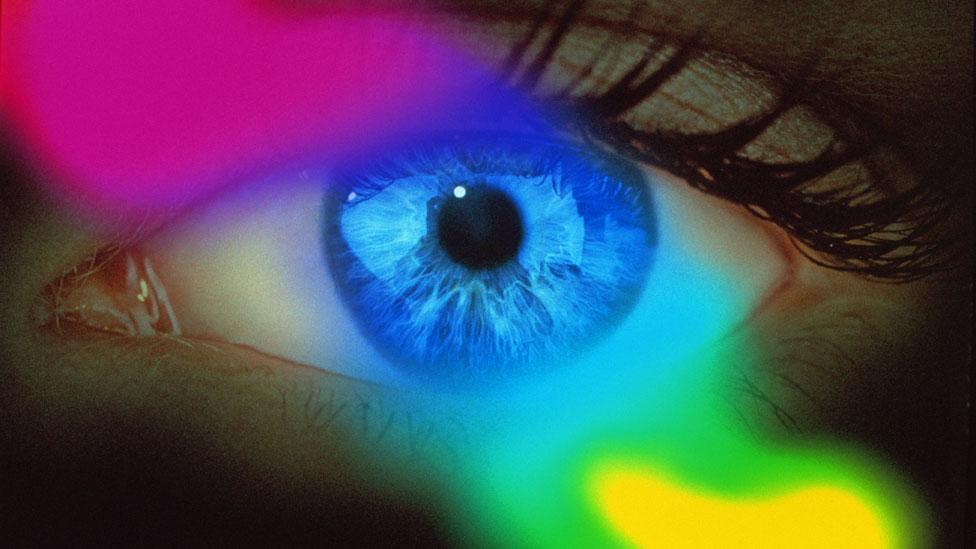
As Concetta Antico took her pupils to the park for an art lesson, she would often question them about the many shades she saw flashing before her eyes . “I’d say,‘ Look at the light on the water – can you see the pink shimmering across that rock? Can you see the red on the edge of that leaf there? ’” The students would all nod in agreement. It was only years later that she realized they were just too polite to tell the truth: the colors she saw so vividly were invisible to them.
Today, she knows that this is a symptom of a condition known as “tetrachromacy”. Thanks to a variation in a gene that influences the development of their retinas, people like Antico can see colors invisible to most of us. Consider a pebble pathway. What appears dull gray to you or me shines like a jeweller’s display to Antico. “The little stones jump out at me with oranges, yellows, greens, blues and pinks,” she says. “I’m kind of shocked when I realize what other people aren’t seeing.”
Tetrachromats are rare enough, but Antico is particularly remarkable, since, as an artist, she is able to give us a rare view into that world. “Her artwork might tap into a structure that all of us can appreciate,” says Kimberly Jameson at the University of California, Irvine,who has studied Antico extensively. It’s even possible that she might suggest ways for more people to see the same way.

Tetrachromat women see shades that other think are monotone (John Nakamura Remy / Flickr / CC BY-SA 2.0)
The question ofwhether we all see the same colorshas a long history in philosophy and science. In the past, there seemed little reason to expect huge differences. We know that almost everyone has three types of “cone cells” in their retina that each respond to a different bandwidth of light. The color of an object depends on the particular combination of those signals, but although the exact sensitivity may vary between people, overall one person’s colors should roughly match another person’s. The exceptions were thought to be color-blind people, where one of the cones is faulty. With reduced sensitivity at certain wavelengths, they struggle to tell the difference between reds and greens, for instance.
In theory, though, it could go the other way: according to some estimates, an extra cone would offer a hundred different variants to each color that humans normally see. We know that this happens in nature: zebrafinches and goldfish both have a fourth cone that seems to help them differentiate apparently identical colors. About 20 years ago Gabriele Jordan at the University of Newcastle and John Mollon at the University of Cambridge proposed a way that it might be possible in humans too.
The crux of Jordan’s argument lay in the fact that the gene for our red and green cone types lies on the X chromosome. Since women have two X chromosomes, they could possibly carry two different versions of the gene, each encoding for a cone that is sensitive to slightly different parts of the spectrum. In addition to the other two, unaffected cones, they would therefore have four in total – making them a “tetrachromat”. For these reasons, it’s thought to be a condition exclusive to women, though researchers can’t totally rule out the possibility that men may somehow inherit it too.

Proving that these people actually see the world differently has involved a two-decade journey, however. Although the relevant combination of genes does not seem to be especially rare – perhaps 12% of women might have four distinct cones – many of the people that Jordan tested just didn ‘ t seem to show any differences in their perception. But by 2010, she had found a subject who perfectly acted the part of a tetrachromat. Jordan’s “acid test” involved colored discs showing different mixtures of pigment, such as a green made of yellow and blue. The mixtures were too subtle for most people to notice: almost all people would see the same shade of olive green, but each combination should give out a subtly different spectrum of light that would be perceptible to someone with a fourth cone. Sure enough, Jordan’ssubject was able to differentiate between the different mixtures each time. “When you ask them to discriminate between the two mixtures, a tetrachromat can do it very quickly. They don’t hesitate, ”says Jordan.

Men are thought to be incapable of seeing this hidden world of color (Magdalena Roeselerby / Flickr / CC BY 2.0)
But what do those colors actually look like? Unfortunately, Jordan’s much-prized subject has not been available for media interviews. But once the abilities of the woman “with super-human vision” became known, many more potential tetrachromats have come forward who might be able to give us an insight.
One of those wasMaureen Seaberg, a journalist and author in New York who took the genetics test after hearingRadiolab’s podcast on the subject. “I have always had polite disagreements with people about shades of colors,” she says. When clothes shopping for instance, she often finds that apparently matching tops and skirts seem to be a different shade to her, clashing horribly – even though no one else seems to notice it. Her sensitivity can sometimes be baffling to those around: when helping to restore a house, she once rejected 32 paint samples before settling on the right shade. “The beiges were too yellow and not blue enough, not cool enough; some of the almonds were too orangey, ”she says – distinctions that were much to the confusion of her building contractor. Of course, that is only anecdotal evidence, but it perhaps tells us a little about the way that apparently identical shades could appear strikingly different to a tetrachromat.
Antico has a similar story. She says she has always known that her eyes saw the world differently to other people – a talent that was soon noticed by her family. “When I was a very little girl, my mother looked at me and said ‘You are going to be an artist and art instructor’.” Today, Antico has fulfilled that prediction, withher own gallery in San Diego, California, where she uses her enhanced vision to create vibrant paintings bursting with color. Consider the following painting of a rainbow eucalyptus. “The tubes of paint were flying. The yellows, the violets, the lime greens – I was ferociously mixing on the palette trying to produce all the streams of color in the bark, ”says Antico. When compared to the real thing, the resulting canvas suggests that Antico is seeing more than the average eye.

Comparing Antico’s painting with the original scene could give a hint of the extra shades she is seeing (Concetta Antico)
It was when looking at one of those paintings one day that a customer suggested that Antico contact some researchers who work on tetrachromacy. The genetics test came back positive, and she began collaborating on a series of experiments with Jameson and her colleagues, including Alissa Winkler at the University of Nevada, Reno.
Jameson immediately suspected the Antico’s genes might also give her enhanced vision in dim lighting. “If you look at her pictures of dawn, she paints a lot of colors and renders them in very low lighting,” she says – conditions that normally reduce our vision to greyscale. That could just be creative license, but Antico claims she is actually seeing the colors there in front of her. Sure enough, Jameson’s experiments have shown that the luminance of different colors is indeed altered for Antico, making them pop out in the half light.

Antico’s vision is particularly enhanced at night, as seen in “Shiny moon in La Jolla” (Concetta Antico)
Enhanced sensitivity is not always a blessing, though. “The grocery store is a nightmare,” she says. “It’s like a trash pile of color coming in at every angle.” That enhanced sensitivity might explain why she finds solace in plain white surfaces. “People find that extraordinary that white is my favorite color, but it makes sense because it is so peaceful and restful for my eyes. There is still a lot of color in it, but it’s not hurting me. ”
Not all tetrachromats have striking abilities. Jameson has found that Antico’s perception outstrips other tetrochromats who have not trained artistically. “Concetta is the perfect storm for tetrachromacy because she has a huge amount of perceptual learning experience by working with color on a daily basis.” If that is confirmed with further research, Antico hopes that she might be able to develop a training system to help all tetrachromatic children realize their potential.
Antico’s ultimate ambitions are even greater: to help us all see the world a little differently. Anecdotally, she says that a few of her students have started to notice some of the extra shades for themselves. “It’s as if a curtain is being lifted.” Of course, without the genes, we can never achieve full tetrachromatic vision – but perhaps people like Antico can point out some differences that are just perceptible to our eyes, with training.
This is a particularly poignant issue for Antico. Thanks to the random draw of the genetic lottery, the particular gene variant that gave rise to her amazing vision has meant that her own daughter is color blind. Perhaps one day, further research could suggest new ways to help everyone – including her daughter – to make the most of their color vision, however limited. “What if we tetrachromats can show the way to color for people who are less fortunate than us?” She says. “I want everyone to realize how beautiful the world is.”
Do you see colors differently? If you would like to comment on this article, or anything else you have seen on Future, head over to ourFacebookorGoogle page, or message us onTwitter.
To read more about tetrachromacy research and Concetta Antico, visit:www.tenthousandthings.infoandwww.concettaantico.com.
********








GIPHY App Key not set. Please check settings